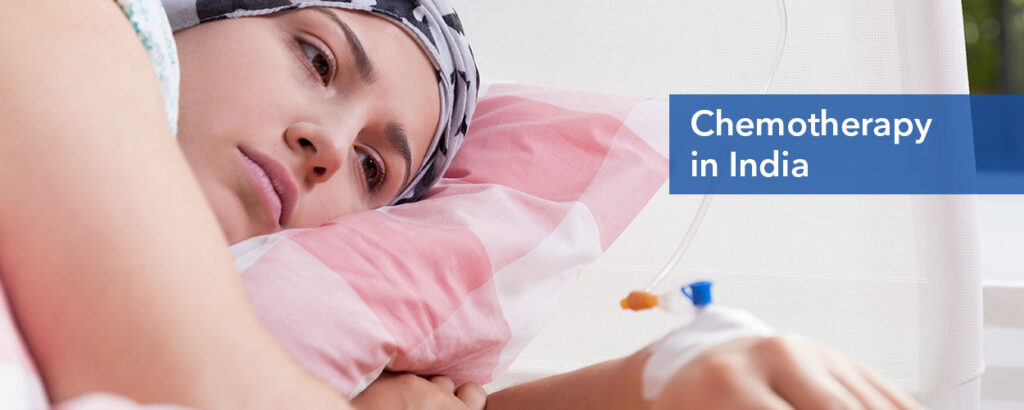
Chemotherapy cost in india
India stands out globally for offering high-quality cancer care at a fraction of the cost found in Western nations. However, even within India, the expenses related to chemotherapy can vary wildly, swinging from a few thousand rupees per cycle to several lakhs.
For patients and their families, understanding the factors that influence the final bill is the first and most crucial step toward financial planning and cost reduction. The overall Chemotherapy cost in India is not a fixed price, but rather a calculation based on ten critical variables.
The 10 Major Factors Influencing Chemotherapy Cost
The cost of your chemotherapy regimen in India will be significantly determined by the following factors:
1. Type of Chemotherapy Drug Used
This is the single biggest cost component. Drugs are categorized by their complexity and novelty:
- Conventional Chemotherapy: Older, established drugs (like Cisplatin, Doxorubicin) are often available as cheap generics. A cycle can cost as low as ₹3,000 to ₹40,000.
- Targeted Therapy: Newer drugs (e.g., Trastuzumab, Imatinib) attack specific genetic mutations in cancer cells. These are significantly more expensive, costing ₹50,000 to ₹2,00,000 per session.
- Immunotherapy: The newest class of drugs (e.g., Pembrolizumab, Nivolumab) harness the patient’s immune system. As cutting-edge, patented therapies, they are the most expensive, often ranging from ₹1,00,000 to over ₹5,00,000 per cycle.
2. Brand vs. Generic Medication
India is a global leader in generic drugs. For non-patented conventional chemotherapy, a patient can choose between:
- Branded Drugs (Innovator): Priced higher due to the original research and marketing costs.
- Branded Generics (Indian Manufacturers): Chemically identical and equally effective, but significantly cheaper. This difference alone can save a patient 30% to 70% on drug costs.
3. Type and Stage of Cancer
The cancer’s type (e.g., breast, lung, blood) and stage (I to IV) dictates the treatment protocol:
- Early-Stage: May require fewer cycles, simple drug combinations, and lower costs.
- Advanced/Metastatic: Often requires aggressive, complex, and prolonged regimens, frequently involving costly targeted or immunotherapy drugs.
4. Number of Chemotherapy Cycles
The total cost is a direct multiplication of the per-cycle cost by the total number of cycles prescribed. A typical course can range from 4 to 8 cycles, spread over several months.
5. Hospital Choice: Government vs. Private
The choice of healthcare facility creates a massive financial difference:
- Government/Charitable Hospitals (e.g., AIIMS, Tata Memorial Hospital): Offer highly subsidized or sometimes even free chemotherapy services. While waiting times can be long, the chemotherapy cost in India at these institutions is minimal.
- Private/Corporate Hospitals (e.g., Apollo, Fortis, Max): Offer state-of-the-art facilities, zero waiting time, and premium amenities, but their costs are substantially higher (up to three times the rate of a government-subsidized unit).
6. Geographical Location
Cancer care costs are higher in major metropolitan (Tier 1) cities like Mumbai, Delhi, and Bangalore compared to Tier 2 or Tier 3 cities. This is due to higher overheads, real estate costs, and the concentration of advanced technology and highly sought-after specialists.
7. Doctor’s Experience and Consultation Fees
A senior, internationally acclaimed oncologist will have a higher consultation fee and may be associated with a premium private hospital, indirectly raising the overall cost of the treatment plan.
8. Cost of Supportive Care and Hospital Stay
Chemotherapy involves several non-drug expenses per cycle:
- Infusion Charges: The cost of the day-care room, nursing staff, and infusion equipment.
- Supportive Medications: Drugs to manage side effects like nausea, vomiting, and low blood counts (e.g., anti-emetics, G-CSF injections), which can be costly.
9. Mandatory Diagnostic Tests
Before and during chemotherapy, extensive tests are required to monitor drug effectiveness and manage toxicity:
- Pre-Treatment: PET-CT scans (₹15,000 to ₹30,000), biopsies, and genetic markers.
- Periodic Monitoring: Routine blood tests (CBC, LFT, RFT) before every cycle, costing around ₹4,000 to ₹8,000 each time.
10. Treatment Combination
If the protocol involves other modalities—like combining chemotherapy with surgery or radiation therapy—the overall cost dramatically increases. For instance, advanced techniques like IMRT or Robotic Surgery significantly add to the final bill.
Top 5 Effective Strategies to Save Money on Chemotherapy
The key to affordability is intelligent, informed financial planning. Here is how you can effectively reduce the Chemotherapy cost in India:
- Prioritize Generic Drugs: Always discuss the possibility of using high-quality, government-approved generic versions of chemotherapy drugs with your oncologist. Indian generic manufacturers offer the same chemical compound at a fraction of the branded price.
- Explore Government Schemes and NGOs:
- Ayushman Bharat (PM-JAY): Offers coverage up to ₹5 Lakh per family annually for eligible beneficiaries, covering cancer treatment in empaneled hospitals.
- State Relief Funds (e.g., CM’s Relief Fund): Provide financial assistance for severe illnesses like cancer.
- NGOs & Charitable Trusts: Organizations like the Tata Memorial Centre (TMC) in Mumbai and various charitable trusts provide significant financial support and subsidized drugs.
- Choose the Right Facility (Government/Charitable): If your budget is the primary concern and your condition allows for the waiting period, opt for a reputed government or charitable cancer center for the most subsidized rates.
- Maximize Health Insurance: Ensure your health insurance policy covers daycare procedures and all types of chemotherapy (including oral and targeted therapies). Always opt for cashless treatment if available to avoid upfront out-of-pocket expenses.
- Seek Price Transparency: Before starting treatment, ask the hospital’s patient relations department for a detailed, written cost estimate that clearly separates drug costs, facility fees, and doctor fees for the entire treatment plan (not just per cycle). Comparing estimates from 2-3 hospitals can lead to substantial savings.
Final Thoughts
By being an informed patient and proactively exploring all available financial avenues, you can secure world-class cancer treatment in India without facing an insurmountable financial burden.

